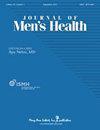睾酮通过miR-143-3p靶向IGFBP-3促进人包皮成纤维细胞生长
IF 0.6
4区 医学
Q4 Medicine
引用次数: 0
摘要
睾酮是一种重要的男性激素,可以促进男性性腺功能的维持和恢复,以及人类尿道下裂和细胞纤维化的修复。本研究主要探讨睾酮对人包皮成纤维细胞(HFF-1)的调控作用及其调控机制。在本研究中,HFF-1细胞用睾酮处理,通过细胞计数试剂盒-8 (CCK8)和Transwell检测评估细胞活力和迁移。采用实时荧光定量PCR (qRT-PCR)、Western blotting和免疫荧光检测雄激素受体(AR)、miR-143-3p和胰岛素样生长因子结合蛋白-3 (IGFBP-3)的表达水平。此外,预测了miR-143-3p在IGFBP-3上的潜在结合位点,并通过双荧光素酶报告基因实验进一步证实了其直接结合。这些结果表明,睾酮增加了HFF-1细胞的活力和迁移。睾酮可下调miR-143-3p,上调IGFBP-3和AR,过表达miR-143-3p可抑制HFF-1细胞活力,负调控IGFBP-3,抑制IGFBP-3可抑制细胞活力和迁移。此外,miR-143-3p被发现直接结合IGFBP-3。IGFBP-3的过表达抵消了miR-143-3p模拟物对HFF-1细胞的调节。总之,本研究表明睾酮至少通过miR-143-3p/IGFBP-3轴促进HFF-1细胞的增殖和迁移以及AR信号传导。这一发现为睾酮在尿道下裂等男性疾病中的应用提供了新的见解。本文章由计算机程序翻译,如有差异,请以英文原文为准。
Testosterone promotes human foreskin fibroblast growth through miR-143-3p targeting IGFBP-3
Testosterone is an important male hormone, which could improve the maintenance and recovery of gonadal function in males as well as the repair of human hypospadias and cell fibrosis. Our study focused on investigating the regulatory effect of testosterone in human foreskin fibroblasts (HFF-1) and regulatory mechanisms involved. In this study, HFF-1 cells were treated with testosterone, and cell viability and migration were assessed by cell counting kit-8 (CCK8) and Transwell assays. The expression levels of androgen receptor (AR), miR-143-3p and insulin-like growth factor binding protein-3 (IGFBP-3) were measured by quantitative real-time PCR (qRT-PCR), Western blotting, and immunofluorescence. In addition, a potential binding site for miR-143-3p on IGFBP-3 was predicted and its direct binding was further confirmed by a dual luciferase reporter assay. These results showed that testosterone increased the viability and migration of HFF-1 cells. Testosterone could down-regulate miR-143-3p and up-regulate IGFBP-3 and AR. Overexpression of miR-143-3p hindered HFF-1 cell viability and negatively regulated IGFBP-3, whereas inhibition of IGFBP-3 impeded cell viability and migration. Furthermore, miR-143-3p was found to directly bind to IGFBP-3. Overexpression of IGFBP-3 countered the regulation of HFF-1 cells by miR-143-3p mimics. In conclusion, this study showed that testosterone promoted the proliferation and migration of HFF-1 cells and AR signaling, at least via the miR-143-3p/IGFBP-3 axis. This discovery presents a novel insight for testosterone application in male disorders like hypospadias.
求助全文
通过发布文献求助,成功后即可免费获取论文全文。
去求助
来源期刊

Journal of Men's Health
Medicine-Urology
CiteScore
0.70
自引率
28.60%
发文量
153
审稿时长
10 weeks
期刊介绍:
JOMH is an international, peer-reviewed, open access journal. JOMH publishes cutting-edge advances in a wide range of diseases and conditions, including diagnostic procedures, therapeutic management strategies, and innovative clinical research in gender-based biology. It also addresses sexual disparities in health, life expectancy, lifestyle and behaviors and so on. Scientists are encouraged to publish their experimental, theoretical, and descriptive studies and observations in as much detail as possible.
 求助内容:
求助内容: 应助结果提醒方式:
应助结果提醒方式:


